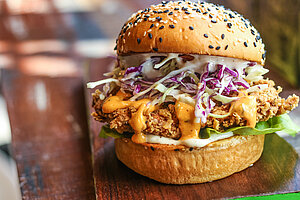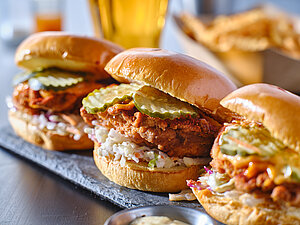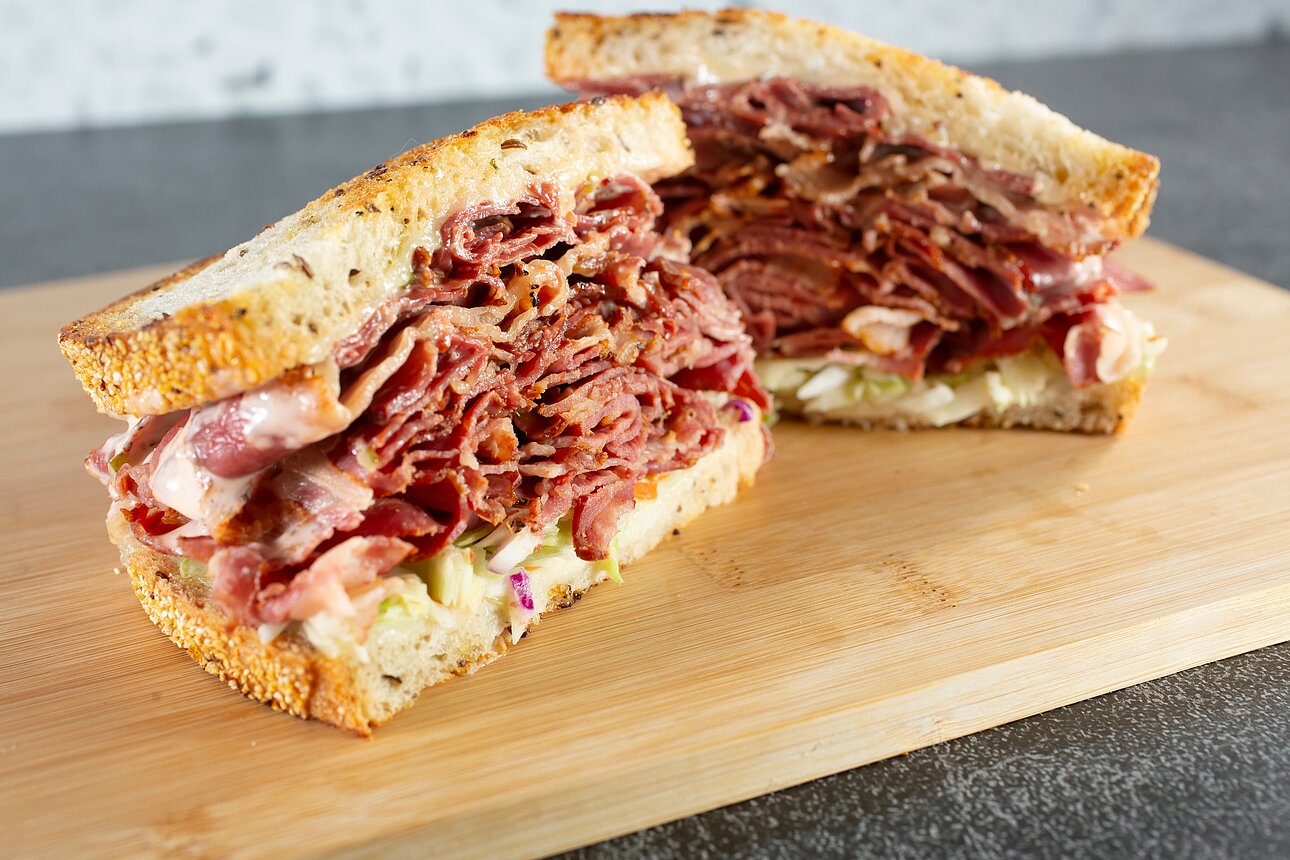 Although seemingly simple, sandwiches can transform meals while satisfying hunger. Long gone are the days of plain bread and minimal fillings, replaced instead with innovative, authentic, and global ingredients. Today, consumers have access to an array of options and want more from their food. Here are the modern trends for premium sandwich ingredients, fast-growing favorites, and insights into key consumer preferences.
Although seemingly simple, sandwiches can transform meals while satisfying hunger. Long gone are the days of plain bread and minimal fillings, replaced instead with innovative, authentic, and global ingredients. Today, consumers have access to an array of options and want more from their food. Here are the modern trends for premium sandwich ingredients, fast-growing favorites, and insights into key consumer preferences.
Current Consumer Trends in Sandwiches and Wraps
When people head out to restaurants and sandwich-focused shops, they seek a meal that delights the senses. They don’t want food they could make at home. This desire for out-of-the-box sandwiches, burgers, wraps, and other lunch offerings means operators can draw in more business by aligning with key trends.
Premium Ingredients
One of the most important trends focuses on what lies between the bread. Trending premium ingredients for sandwiches and burgers are all about high-quality proteins, meat cuts, and rich toppings, showing that nutritious, flavorful food is a leading contributor to consumer choice.
What do consumers want? More consumers favor ingredients with regional or global tastes, such as Korean, Thai, or Southwest spices, ribeye steak, and other premium cuts, plant-based proteins like tofu, and buttermilk or maple sauces. They also want the protein to be the star of the sandwich. Modern consumers seek out generous protein portions along with perfectly proportional toppings, sauces, and other ingredients.
Unique Combinations
Along with high-quality ingredients, consumers also crave uniqueness. To catch their attention, operators can focus on innovative combinations they can’t find anywhere else. Here, we’re seeing sandwiches like the classic BLT topped with creamy mashed avocado and chipotle paste, or sauteed portobello mushrooms drenched in spicy barbecue sauce and topped with feta and cilantro.
Classics like ham and Swiss cheese or turkey club have their place, but they aren’t drawing widespread appeal. These staples might feed the grab-and-go consumer on a budget, but even there, sandwich and burger trends show that the classics require some innovation to stay on top.
 Specialty Breads
Specialty Breads
The bread is another crucial part of the sandwich, with consumer preferences driving the offerings. With classic breads like white, whole wheat, multigrain, or sourdough, specialty breads are also gaining favor.
Bread has shifted from being the base to becoming another sandwich ingredient that sparks excitement for consumers. Often, this means flavored breads like jalapeño cheddar’s robust tang and mild heat or orange-raisin challah’s fragrant notes. It could also mean the sweetness of milk bread or the punchy, nutty flavors of black pepper focaccia.
Putting specialty breads on the menu brings attention to sandwich and burger offerings, elevating lunch or all-day menus into unique dining experiences.
Related: Affordable Luxuries: Consumers Trading Up on Menu Items
Foodservice Trends for Ingredients and Flavor
Looking across the foodservice industry, we find that certain sandwich flavors stand the test of time. Others come and go, but the longest-lasting trends add to this richness and often work their way into proven sandwich favorites.
Predominant Flavors
Found in mature operators, the predominant flavors are ones that act as menu anchors. They’re long-term favorites that large parts of the population know and love. However, these proven classics are also steady offerings, with low growth momentum driving sales. Nevertheless, they appeal to many consumers seeking a familiar favorite during the lunchtime rush.
Predominant flavors are those like turkey, beef, chicken, and sausage. These proteins have become comfortable classics — especially when combined with common condiments and toppings like lettuce, tomatoes, mayonnaise, or onion. Protein-driven sandwiches with simple flavors show off each taste profile and suit different generations seeking a quick bite.
Established Flavors
Along with predominant flavors, we also see established ingredients and flavors across many fast-casual dining restaurants and chains. Some of these flavors lean toward a sweeter profile, such as honey, jam and jelly, and fresh berries. Many of them also have a high growth momentum, showing their adaptability to different menu options and widespread consumer appeal.
Other established flavors tend to be more savory, such as bacon’s salty smoke and pancetta’s salty umami notes. Bitter or tangy flavors like balsamic, vinaigrette, and arugula are also found on many established menus. Flavors with roasted or grilled profiles have steady growth momentum as well and find suitability across different sandwich and burger fillings.
For more trends and exciting insights, sign up for our weekly newsletter HERE
Emerging Flavors
In sandwich trends, the emerging flavors also have an exciting presence. These profiles show ahead-of-the-curve growth and appear on menus at higher-end establishments and some casual chains. Operators ready to broaden their consumer base with sandwich innovation trends could look to this area for inspiration.
We’re seeing sandwich innovation flavors range from sweet to savory to spicy, everything from the smoky heat of chipotle to the fresh herb and citrus notes of cilantro and Southwest ingredients. Other flavor profiles bring a blend of sensations, with buffalo sauce’s tangy and creamy heat and buttermilk’s creaminess and mild acidity.
Artisan sandwich flavors like hickory smoke, nutty rice, sharp cheese like Swiss, Gruyere, and Cheddar, and hot honey bring a range of innovation opportunities driving consumers to seek out new favorites.
Novel Flavors
Finally, novel flavors are also making their way across the foodservice industry — in particular at independent and fine-dining establishments. Many of these flavors show more regional taste profiles, with beloved flavors now available in new markets. Other novel flavors are known but not commonly used as sandwich ingredients. Here, we see ingredient flavors like subtle-peppery daikon radish and sweet fennel, nutty and buttery Muenster cheese, creamy macaroni, and tangy-sweet heirloom tomatoes.
Green chilis, pinto and black beans, Gouda cheese, and cabbage have also made a name for themselves. Gourmet sandwiches might have fillings like toasted plantain, black beans, smooth avocado, and nutty Gouda, or even smoked Colby, barbecue-coated mushrooms, and robust cabbage.
Novel flavors also extend to the sandwich and burger breads, with thick-cut and buttery Texas toast being a top contender. Sesame seed buns are also gaining prominence, appealing to consumers for their nutty flavor profile and textured crunch.
 Looking Beyond the Sandwich: Sides, Promotions, and Value
Looking Beyond the Sandwich: Sides, Promotions, and Value
Equally important are the foodservice trends working alongside sandwich menu innovations. Today’s consumers want to see more sides with their meals, with the choice to turn a quick meal into a satisfying experience. Whether sides are part of a combo or purchased a la carte, they share the authentic tastes of sandwich and burger offerings and give well-rounded flavor profiles. Value and convenience are also important to modern consumers, where quick service should still mean fresh ingredients, value-matched pricing, and high-quality presentation.
BOGO offers and other promotional strategies like loyalty rewards are gaining widespread appeal from consumers. Gratification from saving money or getting rewarded as a frequent diner can also lead to success with other consumers, especially if patrons share the news across social media or their social circle. These strategies can also extend to personalized meals with different menu choices and the ability to mix and match. Sampling the menu or getting a two-for-one deal helps consumers enjoy more of the menu, expand their palate, and encourage repeat visits.
To learn more about Symrise and other foodservice insights, contact the team today.





